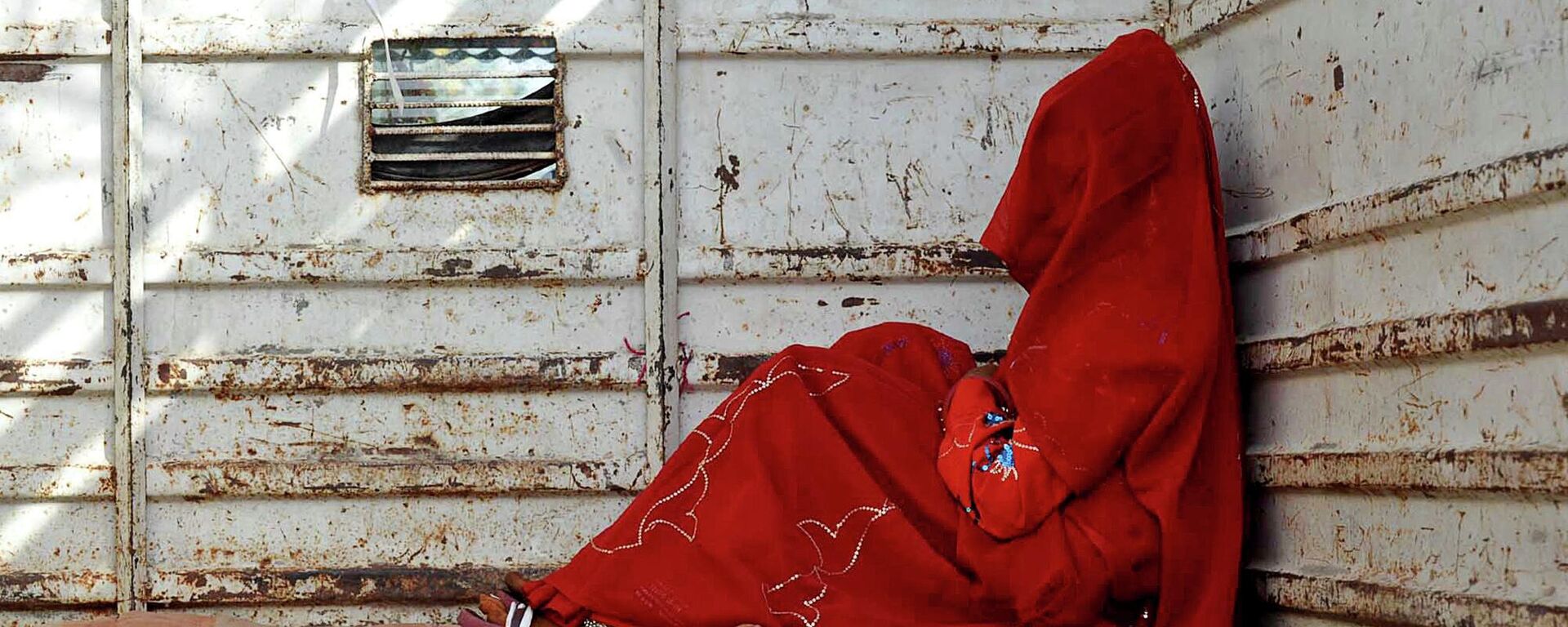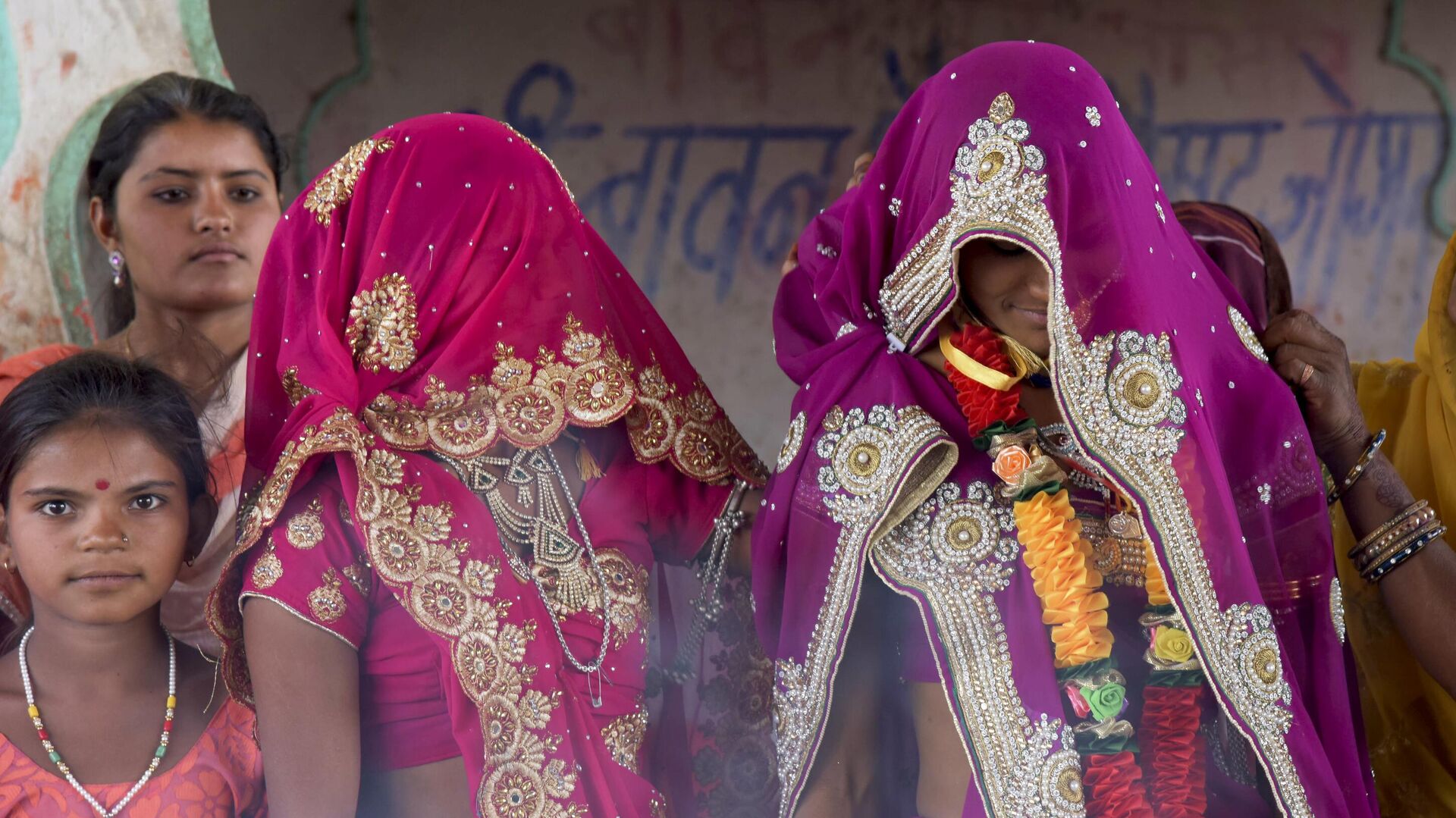https://sputnikglobe.com/20221116/why-do-victims-of-sex-trafficking-return-to-brothels-1104269554.html
Why Do Victims of Sex Trafficking Return to Brothels?
Why Do Victims of Sex Trafficking Return to Brothels?
Sputnik International
In India, a total of 6,533 victims — 2,877 children and 3,656 adults — were reportedly trafficked in 2021. Of them, 6,213 victims have been rescued. However... 16.11.2022, Sputnik International
2022-11-16T12:14+0000
2022-11-16T12:14+0000
2022-12-08T16:32+0000
india
trafficking
sex trafficking
women trafficking
human trafficking
sex trafficking ring
child trafficking
child trafficking
rescue
rescue team
https://cdn1.img.sputnikglobe.com/img/07e6/0b/10/1104283449_0:208:2902:1840_1920x0_80_0_0_91ac50ccfcbd92f9550a07ac7ef2a929.jpg
18-year-old Pinky Singh (name changed) from a small village in India's Uttar Pradesh state fell in love with 22-year-old Raju: as she faced a lot of family resentment over it, the girl decided to elope with him to Delhi.During her train journey to the capital, her "lover" offered Pinky tea, which made her fall asleep. The moment she regained consciousness, she found herself in a brothel in Delhi's red light area: G.B Road.Following 24 hours of absence from home, Singh's family filed a missing report with police, who set up a search operation along with anti-trafficking experts. Luckily, they managed to track the girl down a few days later and finally sent her back home after counseling.Recalling the incident, anti-trafficking activist and founder of the Impact and Dialogue Foundation Pallabi Ghosh, who rescued Singh, said that "a court case was going on and Singh had to go for deposition.""One day her father called me and said that there is a summon that has gone to her house. Please, don't let that come as her in-laws don't know that she was trafficked and rescued from the redlight area. They will disown her."If the family accepts the victim and takes her back home, they focus on getting her married off, which worsens her situation."Once they get their daughter married, again, the person, who is married to her, will be trying to be sexually involved, which further increases the trauma,” Ghosh explained."It is 10 times more difficult for victims to move on in life,” Ghosh said. Some families either marry off their daughters and hide the trafficking incident or don't accept the victim and leave her in a traumatized condition.In another case, 56-year-old Champa from Andhra Pradesh state, who was trafficked and raped three to four times daily by different persons, was rescued, counseled, and sent back home to her family.After a few months, when Ghosh went to the same brothel to conduct a raid, she was shocked to find Champa there. No Track of Rescued GirlsFor activists, the biggest challenge is to keep track of the rescued girls and ensure they have been properly rehabilitated.“Their families didn’t want to contact me. Moreover, the rescued girls didn’t want to be in touch with me because they thought that their previous life will get remembered. There are multiple things, and I think intervention on the ground level is very important,” Ghosh explained.Failed System of Rehabilitation Rehabilitation plays a big role as it gives a new lease on life to the rescued trafficking victims. However, experts told Sputnik that due to the failed system of rehabilitation in India, some trafficking victims return to the red light area or even indulge in sex work again, independently. "Also, a child gets trafficked for sex work due to poverty or people’s need to make easy money. If we’ll send the rescued child back to the place where they came from, without finding any alternative or proper solution to the root cause, definitely the child will return to the brothel for sex work again. So, we need to work out the rehabilitation process first,” Ghosh added.What's worse, the rescued children are sent to a shelter home where they may be further exploited and traumatized.Need for a Proper Strategic Plan of RehabilitationRescuing trafficked girls is half the job. The need of the hour is to provide proper rehabilitation, counseling, and constant follow-ups so that they don’t land up again in the brothel and move on to a new phase of their life.“The proper rehabilitation starts with counseling the child, her family, and other people on accepting the child and how to be with them. First, we have to change the narrative. For instance, whenever a girl is raped, we always say that she's been raped. Why don't we say he raped her. Let's change the narrative,” Ghosh said.Second, she added that one should ask the rescued child what he or she wants to do and then come up with alternative solutions, giving them opportunities, trying to understand their mindset, and whether the child is still in the trauma.Ghosh explains that the biggest roadblock in the process of rehabilitation is when the victim, who is still in trauma, gets married off by their family.
https://sputnikglobe.com/20221107/poverty--income-inequality-remain-main-reasons-for-sex-trafficking-in-rural-india-1103849013.html
https://sputnikglobe.com/20221028/reports-of-girls-auctioned-to-pay-off-debts-spark-outrage-in-india-1102792381.html
Sputnik International
feedback@sputniknews.com
+74956456601
MIA „Rossiya Segodnya“
2022
Sangeeta Yadav
https://cdn1.img.sputnikglobe.com/img/07e4/08/1b/1080292803_0:121:960:1081_100x100_80_0_0_7490b319dab9611e309056b177265184.jpg
Sangeeta Yadav
https://cdn1.img.sputnikglobe.com/img/07e4/08/1b/1080292803_0:121:960:1081_100x100_80_0_0_7490b319dab9611e309056b177265184.jpg
News
en_EN
Sputnik International
feedback@sputniknews.com
+74956456601
MIA „Rossiya Segodnya“
Sputnik International
feedback@sputniknews.com
+74956456601
MIA „Rossiya Segodnya“
Sangeeta Yadav
https://cdn1.img.sputnikglobe.com/img/07e4/08/1b/1080292803_0:121:960:1081_100x100_80_0_0_7490b319dab9611e309056b177265184.jpg
sex trafficking victims, child marriage in india, brothels in india, anti-trafficking experts,
sex trafficking victims, child marriage in india, brothels in india, anti-trafficking experts,
Why Do Victims of Sex Trafficking Return to Brothels?
12:14 GMT 16.11.2022 (Updated: 16:32 GMT 08.12.2022) In India, a total of 6,533 victims — 2,877 children and 3,656 adults — were reportedly trafficked in 2021. Of them, 6,213 victims have been rescued. However, anti-trafficking activists consider a rescue a job half-done, since the need of the hour is to provide proper rehabilitation, otherwise — they are likely to end up sex workers again.
18-year-old Pinky Singh (name changed) from a small village in India's Uttar Pradesh state fell in love with 22-year-old Raju: as she faced a lot of family resentment over it, the girl decided to elope with him to Delhi.
During her train journey to the capital, her "lover" offered Pinky tea, which made her fall asleep. The moment she regained consciousness, she found herself in a brothel in Delhi's red light area: G.B Road.
Following 24 hours of absence from home, Singh's family filed a missing report with police, who set up a search operation along with anti-trafficking experts. Luckily, they managed to track the girl down a few days later and finally sent her back home after counseling.
Singh narrates to Sputnik that she was traumatized and sexually assaulted. Her family decided to keep it a secret and after a year, they got her married off to an IT specialist.
Recalling the incident, anti-trafficking activist and founder of the Impact and Dialogue Foundation Pallabi Ghosh, who rescued Singh, said that "a court case was going on and Singh had to go for deposition."
"One day her father called me and said that there is a summon that has gone to her house. Please, don't let that come as her in-laws don't know that she was trafficked and rescued from the redlight area. They will disown her."
If the family accepts the victim and takes her back home, they focus on getting her married off, which worsens her situation.
"Once they get their daughter married, again, the person, who is married to her, will be trying to be sexually involved, which further increases the trauma,” Ghosh explained.
She also recalled a case of a girl whose husband divorced her after 10 years because he got to know that she was rescued from the red light area.
"It is 10 times more difficult for victims to move on in life,” Ghosh said.

7 November 2022, 14:22 GMT
Some families either
marry off their daughters and hide the trafficking incident or don't accept the victim and leave her in a traumatized condition.
In another case, 56-year-old Champa from Andhra Pradesh state, who was trafficked and raped three to four times daily by different persons, was rescued, counseled, and sent back home to her family.
After a few months, when Ghosh went to the same brothel to conduct a raid, she was shocked to find Champa there.
"When I asked why she returned to the brothel, she said, "I'm HIV positive. My family doesn't want to accept me," Ghosh said, adding that such cases require different interventions and treatment.
No Track of Rescued Girls
For activists, the biggest challenge is to keep track of the rescued girls and ensure they have been properly rehabilitated.
Ghosh told Sputnik that she has rescued more than 10,000 people, but she is aware of the whereabouts of only 500 to 1,000 of them.
“Their families didn’t want to contact me. Moreover, the rescued girls didn’t want to be in touch with me because they thought that their previous life will get remembered. There are multiple things, and I think intervention on the ground level is very important,” Ghosh explained.
Failed System of Rehabilitation
Rehabilitation plays a big role as it gives a new lease on life to the rescued trafficking victims. However, experts told Sputnik that due to the failed system of rehabilitation in India, some trafficking victims return to the red light area or even indulge in sex work again, independently.
“Rehabilitation means giving the child a better life. But most of the time, organizations fail to do so. Organization and its people should ask why did they rescue the child if they can't give her a better life?," Ghosh said.

28 October 2022, 18:59 GMT
"Also, a child gets trafficked for sex work due to poverty or people’s need to make easy money. If we’ll send the rescued child back to the place where they came from, without finding any alternative or proper solution to the root cause, definitely the child will return to the brothel for sex work again. So, we need to work out the rehabilitation process first,” Ghosh added.
What's worse, the rescued children are sent to a shelter home where they may be further exploited and traumatized.
"We put the child in shelter homes along with other rape survivors, trafficked survivors, intellectually disabled survivors. That’s a problem... I’ve got reports of a lot of children from shelter homes telling me that they were sexually abused by their own peers of the same gender. It's altogether different research and requires intervention,” Ghosh said.
Need for a Proper Strategic Plan of Rehabilitation
Rescuing trafficked girls is half the job. The need of the hour is to provide proper rehabilitation, counseling, and constant follow-ups so that they don’t land up again in the brothel and move on to a new phase of their life.
“The proper rehabilitation starts with counseling the child, her family, and other people on accepting the child and how to be with them. First, we have to change the narrative. For instance, whenever a girl is raped, we always say that she's been raped. Why don't we say he raped her. Let's change the narrative,” Ghosh said.
Second, she added that one should ask the rescued child what he or she wants to do and then come up with alternative solutions, giving them opportunities, trying to understand their mindset, and whether the child is still in the trauma.
Ghosh explains that the biggest roadblock in the process of rehabilitation is when the victim, who is still in trauma, gets married off by their family.
"Social psychosocial counseling is most important in order to free her from inhibition, wrong notions, misconceptions, and myths that are inside her," Ghosh concludes.



